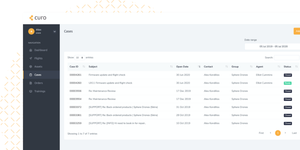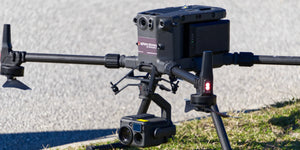LiDAR technology on drones has gained significant attention in recent years, transforming industries from surveying to environmental management. While its advantages are widely celebrated, there’s often some confusion surrounding its use and capabilities.
In this follow-up blog, we’ll demystify LiDAR technology on drones by exploring its limitations and comparing it with other methods. Our goal is to provide a balanced view, helping you understand why LiDAR is a powerful tool in its own right.
What is LiDAR and why is it buzz-worthy?
Before diving into its limitations, let’s recap what makes LiDAR so special. LiDAR is a remote sensing technology that uses laser pulses to measure distances. When attached to drones, it captures high-resolution, three-dimensional data of the surveyed area with remarkable accuracy.
The combination of drones and LiDAR is particularly powerful because it allows for quick, detailed surveys of large areas that might otherwise be challenging to reach. This efficiency and precision have made LiDAR a favourite among professionals in various fields.
LiDAR is much more accesible than ever before. Although LiDAR has been around for a while, they were typically very heavy, and very expensive. Since LiDAR scans were generally operated from crewed aircraft, it was expensive to have surveys done and lead times could be longer. RPAS (Remotely Piloted Aircraft Systems) have resulted in much faster turnaround, reduced cost and on-demand capabilities, enabling internalisation of LiDAR Capture capabilities for organisations or more accessibility for outsourcing with more people able to do it due to reduced barriers to entry today.
The flip side: LiDAR’s limitations
While LiDAR is an impressive technology, it’s not without its drawbacks. Understanding these limitations is crucial for making informed decisions about which technology best suits your needs.
|
Limitation |
Description |
|---|---|
|
Cost |
Buying a high-quality LiDAR systems can be expensive, which might be a barrier for smaller projects or organisations. Hiring can be an option though. |
|
Complexity |
The data collected by LiDAR can be complex and require specialised software and expertise to interpret accurately. |
|
Data Overload |
LiDAR surveys produce vast amounts of data, which can be overwhelming and time-consuming to process and analyse. |
|
Limited Penetration in Dense Vegetation |
While LiDAR can penetrate vegetation, extremely dense canopies might still limit data accuracy and completeness. Specialised LiDAR equipment may be required depending on the situation. |
Exploring alternatives to LiDAR
Though LiDAR offers exceptional capabilities, it’s not the only tool in the surveying toolkit. Here are a few alternatives that might be worth considering:
|
Alternative |
Description |
|---|---|
|
Photogrammetry |
Uses overlapping photographs taken from drones to create 3D models. While not as precise as LiDAR, it’s often more affordable and easier to process. Photogrammetry cannot compete in situations with heavy vegetation though. |
|
Radar |
Utilises radio waves to detect objects on or below the surface (e.g. grounds structures, pipes). It’s beneficial for certain applications but typically lacks the resolution and detail of LiDAR. |
|
Total Stations |
Optical instruments used for precise measurements in ground-based surveying. Though highly accurate, they are less efficient for large-scale or difficult-to-access areas. |
|
“Green” LiDAR |
Green LiDAR uses a different wavelength of light which allows for penetration of water more effectively. While still technically ‘LiDAR’, it is worth clarifying that ‘traditional’ LiDAR will not enable surveying beneath the surface of the water. |
|
Sonar (for underwater) |
Employs sound waves to map underwater environments. It’s ideal for aquatic surveys but is not applicable for terrestrial mapping. Although some LiDAR payloads can make underwater scans. |
Why LiDAR remains a top choice
Despite these alternatives, LiDAR continues to lead the way in many applications. Its precision and ability to capture detailed, three-dimensional data make it invaluable for complex surveying tasks. The technology has become more accessible and affordable over time, making it a go-to solution for many professionals these days.
LiDAR: The more you know
Navigating the world of surveying technologies can be daunting, but understanding the strengths and limitations of each option can help you make informed choices. LiDAR technology on drones remains a powerful tool, providing unmatched accuracy and efficiency for a wide range of applications. However, considering alternatives and their respective advantages can ensure you select the best solution for your specific needs.
If you’re ready to explore the possibilities of LiDAR or need guidance on choosing the right technology, get in touch with our expert team via the form below or on 1800 119 111.






















